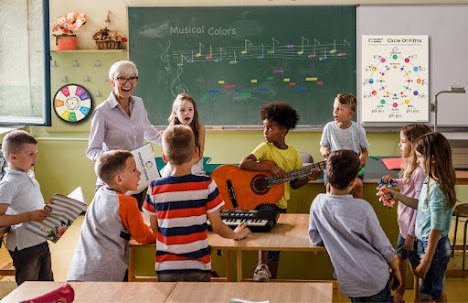Color Coded Music Method: Make Experimenting With Color Theory Easy
Color coding music brings success to LD students, because it works with the student’s strengths. Color creates visual labels for the notes, and colored rhythm greatly reduces the information a student needs to process.Applying the right color coded music method, students can play right away without being entirely dependent on the score to learn music. At the same time, they interact with the score in meaningful ways. Color coded music notes not only aid in learning the music and also in learning musical concepts.
There are two main advantages to using color-coded music. For starters, the colors make it obvious which note is which. Half the battle of initially playing the piano is figuring out which note is which. Problem solved! Even once you've learned the notes on a piano, it can take a split second to make sure you're about to play the right one. The colors help reduce that split second time even further, and your intermediate students will still notice that the stickers feel comfortable.
The second advantage stems from the first, but not in a way most people realize. When you're a young kid playing an instrument, your brain is making a lot of strong musical connections for the first time. If your teacher asks you to play a note B, and you play a note A, you're forcing a connection between the idea of B and the sound of A. No bueno.
By introducing individual notes to children slowly, one at a time, you can develop the connections needed for memorized pitch. If you need more information about color coded music notes and Musical color theory online, please browse www.musicalcolors.com




Comments
Post a Comment